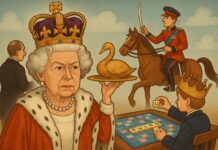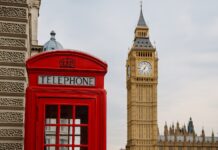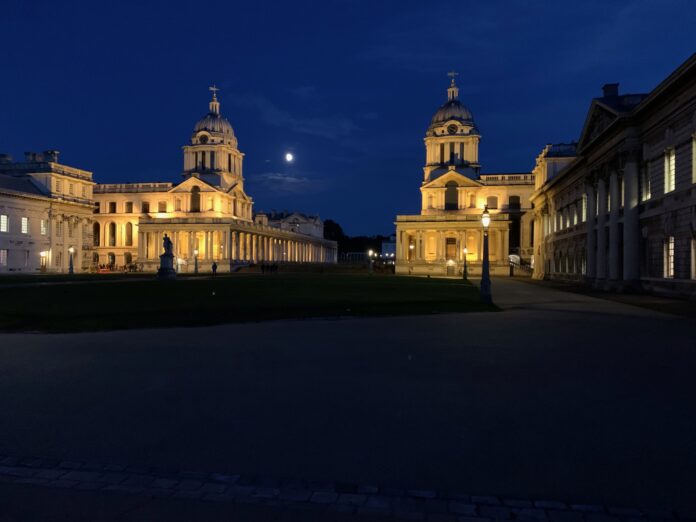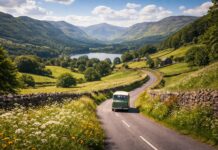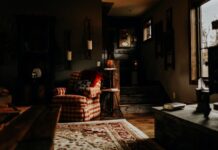Greenwich, located in London, is a historic and vibrant neighbourhood with significant importance. It’s known for its rich maritime heritage and is home to the Prime Meridian, which divides the Eastern and Western Hemispheres of the Earth. This special line can be seen at the Royal Observatory, where visitors can simultaneously stand in the Eastern and Western parts of the world.
Greenwich is a charming blend of old and new, with cobblestone streets, traditional pubs, and a bustling market. The area is also famous for the Cutty Sark, a well-preserved 19th-century sailing ship that offers insights into Britain’s maritime past. The majestic Greenwich Park provides breathtaking views of the city skyline and the River Thames. This UNESCO World Heritage Site offers a variety of attractions, including the National Maritime Museum and the Queen’s House, showcasing art and artefacts from centuries ago. With its unique history and captivating attractions, Greenwich is a must-visit destination for anyone exploring London, United Kingdom
51 Interesting Facts About Greenwich, London, United Kingdom
- Greenwich is located in southeast London and is best known for being the location of the Prime Meridian.
- The Prime Meridian divides the eastern and western hemispheres. It passes through Greenwich.
- Greenwich is home to the Royal Observatory Greenwich, founded in 1675 by King Charles II to help improve British navigation. This is where the Prime Meridian runs through.
- Greenwich is where the universal time and Greenwich Mean Time zone starts.
- The Royal Observatory houses one of the world’s finest historic clocks and astronomical instruments. It also has stunning views over Greenwich Park.
- Greenwich is where the Greenwich foot tunnel passes under the Thames to the Isle of Dogs in east London.
- The Cutty Sark ship is docked at Greenwich and is the world’s sole surviving 19th-century tea clipper. She is now preserved as a museum ship.
- Greenwich’s Old Royal Naval College is one of the finest examples of architectural symmetry in the UK. It’s now home to the University of Greenwich and the National Maritime Museum.
- Greenwich Park is one of London’s largest single-open spaces and still belongs to the English Heritage. It has panoramic views of the London skyline.
- There are 336 steps up to the Royal Observatory from Greenwich Park, with outstanding views across London.
- Greenwich once held the European Industrial Fair, a hugely influential international trade exhibition held every two years between 1898-1903.
- Greenwich hosts the annual Greenwich Comedy Festival each autumn, showcasing up-and-coming stand-up comedy talent.
- The Greenwich Theatre is the National Theatre’s first dedicated family theatre outside London.
- Trafalgar Tavern is reputed to be one of Admiral Nelson’s favourite places to drink before his victories at Trafalgar and the Nile. Dickens also drank here.
- The A206 that runs through Greenwich is one of the most photographed streets in England due to its beautiful houses.
- Greenwich Station is 200 years old and is one of London’s original commuter termini. It has a Grade II listing.
- Greenwich is where the speculative builders first erected streets of decent family-terraced houses during London’s 19th-century growth.
- The Fan Museum in Greenwich houses one of the largest collections of fans in the world, containing over 4,500 fans dating from the 16th century onwards.
- Greenwich is twinned with Greenwich, Connecticut, in the United States and Greenwich, Brussels, in Belgium.
- Charles II’s burial place is St. Alfege’s Church, the oldest building in Greenwich.
- Greenwich council estate is one of Britain’s earliest forms of large-scale public housing, featuring landscaped gardens and a communal feel.
- The Queen’s House is one of Britain’s earliest completely symmetrical Palladian mansions, located in the Old Royal Naval College.
- Infamous pirate and smuggler William ‘Captain’ Kidd supposedly buried treasure in and around Greenwich and the Thames foreshore.
- Greenwich used to have a brewery, Potwell Inn, which produced porter – the popular British dark beer – during the 18th century.
- Greenwich once had a coal wharf – Coal Wharf in the River Thames – but it was replaced by a marina in the early 1970s.
- Greenwich Market is one of London’s oldest farmer’s markets every Wednesday, Friday and weekend, hosting street food and craft stalls.
- The 1840 Grade I-listed Greenwich foot tunnel took over 7 years to build at a cost of over £120,000. It links Greenwich to the Isle of Dogs.
- Henry VIII’s Lead Balloon, a replica of his gilded lead-covered vessel used in 1502, is housed in the National Maritime Museum.
- The views from Greenwich Park inspired famous artists such as J.M.W. Turner, John Constable and Canaletto.
- Greenwich is the setting for films like Atonement (2007), Spy Game (2001) and Elizabeth (1998) due to its historic buildings and parks.
- Greenwich once held an annual June Midsummer Fair dating back to the 13th century, originally a livestock market.
- Remains of Richard III were discovered in a car park in Leicester using records in the National Archives held at Kew near Greenwich.
- Famous diarist Samuel Pepys wrote about using Greenwich as an excuse to visit his mistress in the 1660s.
- The Phoenix Brewery stood on the site of what is now the Old Brewery housing estate. It closed in the 1930s.
- Greenwich Foot Tunnel links Greenwich to the Island Gardens on the Isle of Dogs across the Thames.
- London’s Millennium Dome, now The 02 Arena, stands opposite Greenwich on the Thames floodplain.
- The Pentaliminary Convention was held in the Queen’s House in 1864, determining the boundaries of North America.
- The Greenwich meridian line passes through the Royal Observatory every day at noon.
- Greenwich is believed to get its name from the Saxon word ‘grene wic’ meaning ‘green settlement’.
- Greenwich Park is home to fallow deer, which have roamed freely there since the park became royal hunting grounds.
- Notable residents of Greenwich, past and present, include Sir Christopher Wren, Joseph Priestley and Mick Jagger.
- The Greenwich foot tunnel is London’s first pedestrian transport link across the Thames.
- Interesting comedy fact about Greenwich has been home to the annual Greenwich Theatre Comedy Festival each November since 1993.
- Another fact, Greenwich once held the Olympic white water canoe/kayak slalom events during London 2012 in this historic borough.
- Greenwich’s time balls were once dropped precisely at 1 pm each day to help ships check their marine chronometers.
- Greenwich is London’s designated meridian, where the eastern and western hemispheres are divided.
- The Queen’s House is considered one of Britain’s finest examples of Baroque architecture.
- Greenwich’s Russian artist colony influenced artists like Isaac Levitan and Valentin Serov in the late 1800s.
- The Fan Museum holds the world’s largest collection of fans, from hand-held to architectural examples.
- Greenwich features on a British 50 pence coin due to marking the Prime Meridian line.
- The last important fact is, Famous residents of Greenwich have included 17th-century diarist Samuel Pepys and 18th-century anti-slavery campaigner Olaudah Equiano.
Three Greenwich Historical Facts
- Greenwich was the site of the Royal Observatory, established in 1675 by King Charles II. The observatory was built to determine the precise time for navigation and astronomy, and it is where the Prime Meridian, or line of 0° longitude, was established. This line divides the Earth into two hemispheres and is the reference point for all global time zones. The Royal Observatory is also home to the famous clock tower, which houses the largest four-faced chiming clock in the world.
- Greenwich was a major shipbuilding and maritime trade centre during the 18th and 19th centuries. The town’s location on the Thames River made it an ideal place for shipbuilding and repair, and many historic ships were constructed there, including the HMS Victory, which Lord Nelson used during the Battle of Trafalgar. The Old Royal Naval College, located in Greenwich, was also a significant landmark in the area and served as a training ground for naval officers.
- Greenwich has been associated with royalty throughout history, with several palaces and castles being built in the area. One of the most famous is the Palace of Placentia, built in the 15th century and served as a residence for several English monarchs, including Henry VIII and Elizabeth I. The palace was later rebuilt and renamed the Queen’s House, and it now serves as a museum and art gallery. Another notable royal building in Greenwich is the Royal Hospital, founded by King Charles II in 1694 as a retirement home for sailors. It is now home to the University of Greenwich and the Trinity Laban Conservatoire of Music and Dance
Finally, Greenwich, London, is a fascinating place that encapsulates a world of history, science, and culture. The neighbourhood offers a captivating blend of past and present, from the iconic Prime Meridian to the majestic Cutty Sark. Its maritime legacy, scenic park, and cultural treasures make Greenwich a remarkable and unforgettable destination. Whether interested in history, science, or culture, Greenwich is a place you will not want to miss. It is a truly remarkable and unforgettable destination.









